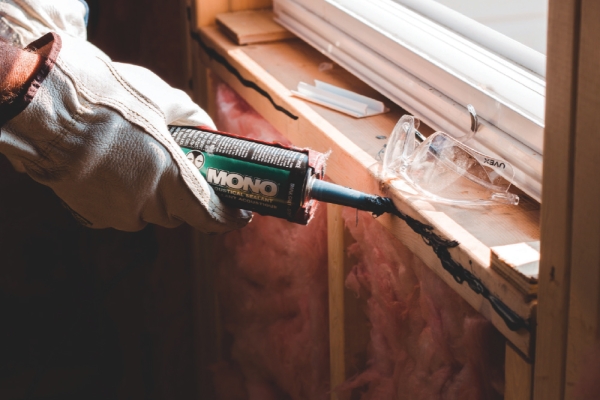Increasing home energy efficiency funding confronts lack of available contractors – MiBiz: West Michigan Business News
Energy Disrupter

Clean energy and housing advocates in Michigan are working to spend down an increasing amount of weatherization funds with a shrinking pool of contractors at their disposal.
Kent Community Action, which oversees weatherization programs locally in Kent County, expects to receive about three times its usual amount of funding over the next five years, said Executive Director Susan Cervantes. This is because of $10 billion being allocated to various infrastructure causes across the state from the Infrastructure Investment and Jobs Act that President Joe Biden signed in November.
Kent Community Action is yet to receive an estimated timeline for when additional funds will come through, but they have received guidance from the state to ramp up operations, Cervantes told MiBiz.
The end of Michigan’s regular five-year funding period for its Weatherization Assistance Program is on June 30. At the beginning of 2021, Michigan’s program still had $26.7 million from the U.S. Department of Energy in its budget. The Weatherization Assistance Program funds energy efficiency upgrades to low-income households, creating more efficient homes that in turn reduce energy costs for residents.
Michigan Energy Innovation Business Council (MEIBC) President Laura Sherman raised concerns in a recent Energy News Network op-ed that money in the regular five-year cycle could go to waste if local programs aren’t able to spend down the funds in time.
“One of the challenges is that this funding is cyclical. It’s hard to build up a base of contractors when we don’t have steady funding to support that,” Sherman said in an interview.
The MEIBC is working with state lawmakers and the Whitmer administration to create a separate budget line item that would incentivize contractors that do weatherization projects.
“Unfortunately, because of the ($8,000-per-household) cap on a per-project basis, the contractors aren’t able to get the work done that needs to be done with the cost of materials and cost of labor being higher,” Sherman said. “There’s also a huge demand (for these services from consumers).”
About 90 houses are weatherized annually in Kent County. Additional funding could increase that number to 200 to 300 houses a year, Cervantes said.
“We are looking for more partnerships with contractors and with companies that can help us recruit and make referrals,” Cervantes said. “Finding enough houses (to weatherize) won’t be a problem because Kent County desperately needs weatherization services.”
Existing and new weatherization funds can be used similarly on a range of home improvement projects to make residences more energy efficient, Cervantes explained. This could include upgrading insulation on homes, as well as fixing or replacing water heaters, refrigerators and furnaces. To be eligible for home or rental repairs made through the Weatherization Assistance Program, a household’s annual income must be at or below 200 percent of the poverty guideline.
“It’s harder to find contractors for weatherization and it’s not necessarily because the jobs are smaller, it’s also because the houses are old and it’s just easier to do new construction,” Cervantes said. “However, contractors I think will agree that it’s more rewarding to work in the weatherization program because we’re helping those that are most in need.”
New Development Corp., a housing nonprofit that serves the north side of Kent County, was recently awarded a $50,000 state grant. Money came from $640 million in Michigan State Housing Development Authority funding from Gov. Gretchen Whitmer’s Building Michigan Together Plan.
The funds will help homeowners in Grand Rapids’ Creston Neighborhood make exterior “curb appeal” repairs as well as weatherization upgrades for aging homes, said Helen Lehman, executive director at New Development Corp. This is the nonprofit’s third time receiving the state grant, Lehman said.
In the past, the funds have gone toward upgrades like fixing driveways, windows and porches, as well as furnaces and water heaters that make homes more energy efficient, Lehman said.
“We’re expecting the $50,000 to go pretty quickly, but we’re encouraging people to think about it, get their measurements and bids in even if we don’t have money to fund their repairs in this grant cycle,” Lehman said. “We have 31 people in the pipeline already.”
Finding contractors for the program that New Development Corp. administers with the MSHDA grant also has been a challenge, Lehman said.
“It’s really hard to find contractors that want to do small jobs,” Lehman said. “Our limit is $10,000 per project, but we’ve had many that have been under $5,000. We also do full home renovations separate from this program, so we’ve had to reach out to subcontractors that do the larger jobs for us. That’s been one of the things that has been most helpful for us.”
Making homes more energy efficient helps decrease energy consumption and frees up available income for homeowners and tenants, said Grace Michienzi, director of research and policy at Michigan Energy Innovation Business Council.
“This work is important on so many levels,” Michienzi said. “First and foremost, for reducing costs for Michigan families, but also achieving energy efficiency. This federal funding can help grow jobs in the state and it can help to maintain existing jobs.”
Lower-income households spend disproportionately more money on utilities, facing what’s known as a higher energy burden, than middle-class households, Cervantes said.
“They may have to make choices between electricity, gas and food,” Cervantes said. “It also decreases a household’s carbon footprint.”
Original Source: https://mibiz.com/sections/energy/increasing-home-energy-efficiency-funding-confronts-lack-of-available-contractors
















